1. I would like to know that regarding shraddha as it is only done by offering food to bramhin in temple and giving dakshina, the bramhin does a short prayer nothing is done as per the actual ritual. Then what should be done? Does the prayer reach our pitras, please clarify
Following paragraph gives information on importance of praying with spiritual emotion at the time of Shraddha.
How is the benefit of the shraddha acquired merely by praying? By praying with spiritual emotion the Pitars, inferior Deities and other Deities are appeased and attracted towards the person who prays. Together with their blessings the person also acquires the benefit of the shraddha. Invoking the Deities by raising hands and praying to the Pitars is a symbol of the devotee’s spiritual emotion (Bhav) of helplessness. There are several options available for performing Shraddha. For more information:https://www.hindujagruti.org/hinduism/knowledge/article/shraddha-ritual-and-chanting-of-the-name-of-lord-dattatreya.html#2
2. What is the exact significance of child death as per Sanatan dharma? What happens to soul when dies as child. Will it take same journey as “Pitrus“? or any other gati? Is the reply yes? i.e. is it the same as other ancestors?
For children till their thread ceremony is performed, if they die before that, then their gati (further journey) depends upon thier deeds, give-and-take account etc of previous birth. Since in this birth they may not have added anything to it. Otherwise there is no other difference as compared to other pitars.
3. Please tell the procedure to be followed when the birthday falls within a period of 1 year of demise of once parents or grand parents or other near ones (whose karmas need to be done)
Birthday celebration not being any festival or Vrat there are no such restrictions.
4. Is it necessary/mandatory to perform Ekadrishti Shradha every year after duly performing Gaya Shradha of my Father?
Shraddha means faith (श्रद्घा). One has to constantly remember favours done on him by his ancestors, sages, God and society and try to repay 4 debts (debts to ancestors, society, sages and God). This has to be done through bhav (spiritual emotion). Shraddha is the means for repaying debt to deceased ancestors. If one is not able to do the ritual, at least one can stand in the water (river) and perform tarpan. Ritual is not important, but the faith and bhav is.
5. At what age can Aatma Shraddha be performed?
This shraddha can be done once by the person any time during his life time.
6. A Jivatpitruk is not allowed to perform Pitrutarpan, therefore, I want to know the difference between ‘Tarpan‘ & ‘Pitru Tarpan‘ as both types are done for ancestors’ souls (pitar) and on which ocassions it is performed? My father is alive and I am the eldest son. Can I do the ‘Tarpan‘ for my grandfather and where should I do it?
You cannot do Tarpan for your grandfather. Offering of water to deceased ancestors’ souls (pitar) is called as Pitru tarpan. Refer to Significance and meaning of Tarpan for details
7. As per the article on ‘Problems due to ancestor’s soul’, ‘having all female progeny’ is a ‘problem’ in life. Is it valid in today’s world when the birth rate of female is lesser than male? If single gender progeny is a problem, then ‘all male progeny’ should also be mentioned as a problem.
The implication of having only female progeny is that further continuation of propagation of family of that person is stopped.
8. The priests performing the Shraddha rituals are sometimes illiterate and have poor pronunciation of Sanskrit language. I had a Shraddha ceremony performed at the banks of mother Ganga and was not satisfied by what the priest was chanting. I wonder if the Pitars are pleased and satisfied?
Nowadays since most people do not perform rites for the departed (shraddhas), etc. as in the olden days nor undertake spiritual practice, most suffer due to the subtle bodies of ancestors. Only saints can tell whether one is suffering or will suffer due to ancestors. If one is not fortunate enough to meet such a saint then considering that certain suffering is inflicted due to ancestors’ subtle souls one can do spiritual practice as given below. Inability to get married, marital disharmony, difficulty in conceiving a child, miscarriages, mentally retarded or handicapped child or all female progeny, death during childhood, etc. are some of the indications of suffering due to ancestors’ subtle bodies. Poverty, physical illness, etc. can be some other indicators.
-
If one has no problems at all, to avoid suffering in the future or if one has a minor problem, one should chant three malas (rosaries) of ‘Shri Gurudev Datta’ everyday. Apart from this to avoid suffering due to destiny as well as to make spiritual progress one should do maximum amount of chanting of the Name of the family deity.
-
If the problem is moderate, then along with chanting of the Name of the family deity one should chant atleast six malas of ‘Shri Gurudev Datta’. In addition every Thursday one should visit Shri Datta’s temple and perform five circumambulations and chant one or two malas of ‘Shri Gurudev Datta’ in the temple, for atleast a year. Thereafter one should continue to chant three malas.
-
If the problem is severe, a minimum of nine should be chanted everyday. Rituals like Narayanbali, Nagbali, Tripindi shraddha, Kalasarpashanti, etc. should be performed at places where jyotirlingas (the divine phallus as a symbol of Lord Shiva) are situated. In addition to this one should undertake spiritual practice at the seat of worship of Lord Datta or render service unto a saint and acquire His blessings. (REFERENCE FROM SCRIPTURES?)
-
Shri Datta Jayanti (Birthday of Shri Datta): Devotees of Lord Datta celebrate His birthday on the full moon day (pournima) of the Hindu lunar month of Margashirsha.
Read more at What is the significance of chanting Shri Gurudev Datta?
8. I use sesame seeds and water for tarpana ritual and offer the oblations into a pot. I have observed that seeds have started to germinate. I have heard that seeds should not germinate. If so, what should I do with the germinated seeds? What is the best way to dispose the seeds and water?
The oblations of sesame seeds should be disposed off in the root of the tulsi plant or any other tree or immersed in flowing water (river or sea). Once immersed, later, even if the seeds germinate, one is not affected by it as they are already immersed. The oblation of sesame seeds should be disposed off as early as possible.
9. Please guide whether shraddha in Gaya is performed once in a life of a person or it can be done any number of times?
The shraddha at Gaya can be performed any number of times.


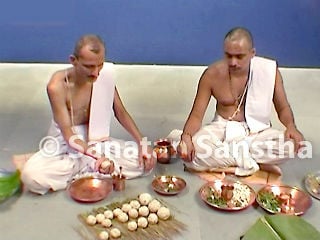 When, where and by whom should Shradh vidhi be performed ?
When, where and by whom should Shradh vidhi be performed ?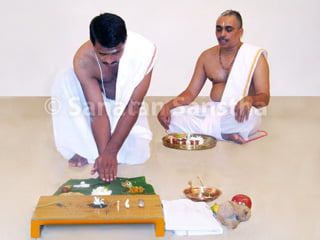 Shradh food
Shradh food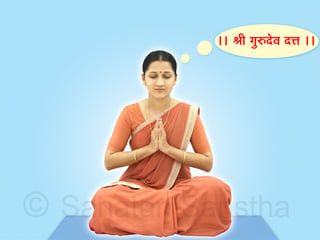 Why should we chant ‘Shri Gurudev Datta’ the Name of Lord Datta ?
Why should we chant ‘Shri Gurudev Datta’ the Name of Lord Datta ?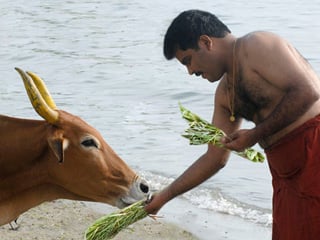 How to do Shradh in case of obstacles
How to do Shradh in case of obstacles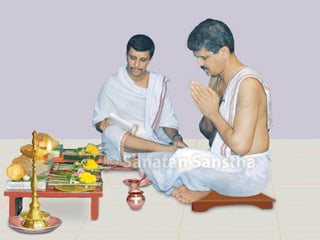 Narayan Nagbali and Tripindi shradh
Narayan Nagbali and Tripindi shradh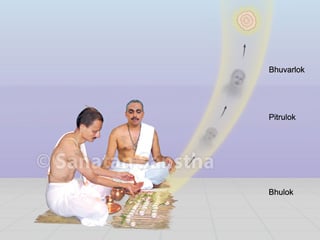 Objectives, Benefits and Importance of Shradh
Objectives, Benefits and Importance of Shradh
Namaskar Ramamurthyji,
When a person departs, the time is recorded so as to find out the exact tithi, nakshatra and other details which are required during performance of Shraddha and other post death rites & rituals.
It is not important that the Shraddha be performed at the time when the person had departed. Shraddha rituals are conducted only during the aparanhakaal (12 noon to 4 pm)
Yes, as per Dharmashastras husband can do the post-death rites of his wife.
Is there any sthothra to be recited on Lord Dattatreya on sraddha day
Yes, you can do shraddha if your parents are not ready for the same. But you have to tell this specifically to the priest/purohit who will carry out shraddha vidhi
Yes, if tithi of death of your family member falls during Navratri or Dussehra, you can perform varsha shraddha
Namaste sir, i have a query regarding performing Aarti. HOW TO KEEP DOWN THE AARTI PLATE AFTER PERFORMING AARTI. WEATHER LAMPS FACING GOD OR OPPOSIT?
Namaskar, Lamp must be facing God !
Namaskar Rakesh ji, yes you can perform Shraddha ritual if tithi of the day of death of your relative/parents is Ekadashi
Is it true that shradh should not be performed for next 3 years of persons death?
No, actually every year Shraddha should be performed
Yes